During fall we get greeted by sunshine earlier in the mornings and treated to a soft glow as the sun winds down for the day. One of my favorite ways to experience the shift in the pattern of the sun is through the wispy fronds of ornamental grasses. Fall is definitely the time for ornamental grasses to shine.
Ornamental grasses bring beauty and texture and can make ordinary landscapes pop with interesting focal points. We carry multiple selections with various heights and widths for perfect ease of finding the perfect fit for your home. (P.S. for smaller apartments, ornamental grasses look and perform amazing in pots too!) Let’s take a look at a few outstanding varieties that happen to be some of Rainbow Gardens favorites.
5 (But Really More) Favorite Ornamental Grasses
1. Inland Sea Oats: Made for the shade, you can usually see these ornamental grasses on walks through wooded areas in our city parks, as Inland Sea Oats are Texas natives. Inland Sea Oats do not need well-drained soil as they prefer consistent soil moisture. They also have a fantastically strong and extensive root system making Inland Sea Oats an excellent choice for plants needed to combat soil erosion. This quickly-spreading, bamboo-resembling, perennial grass grows an average of 1′-2′ high by 3′-5′ wide. When fall and winter temperatures settle in, foliage turns a yellow-bronze color.
For our pollinators: Showy seed heads, that range from off white to the palest pink and then tan, droop off of the grass blades from summer through fall. These seed heads feed our native birds through the winter, so wait until early spring to prune them back. Inland Sea Oats are also host plants to some of our skipper butterflies.
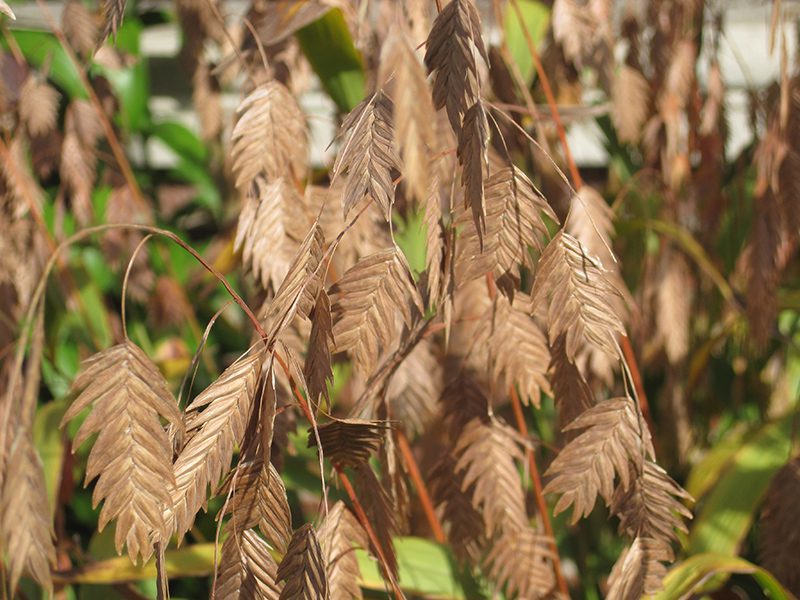
2. Mexican Feather Grass: You’ve seen it, and most likely, you’ve loved it! Mexican Feather grass is often found in median displays of local shopping centers. The short and compact growth habit of these ornamental grasses (18″ tall x wide) make them perfect choices for specimens that you wish to display up front and center. When they are planted in mass, the fine, wispy, texture of Mexican Feather grass, and the natural movement it creates, is a dreamy site to behold, especially on a slightly windy day. The foliage is a light green hue that turns to a soft tan color in fall and winter
Plant in areas that receive full to part sun. Mexican Feather grass is a low water user, to the delight of San Antonio residents. These ornamental grasses make a great native “thriller” plant for the center spot in container arrangements.
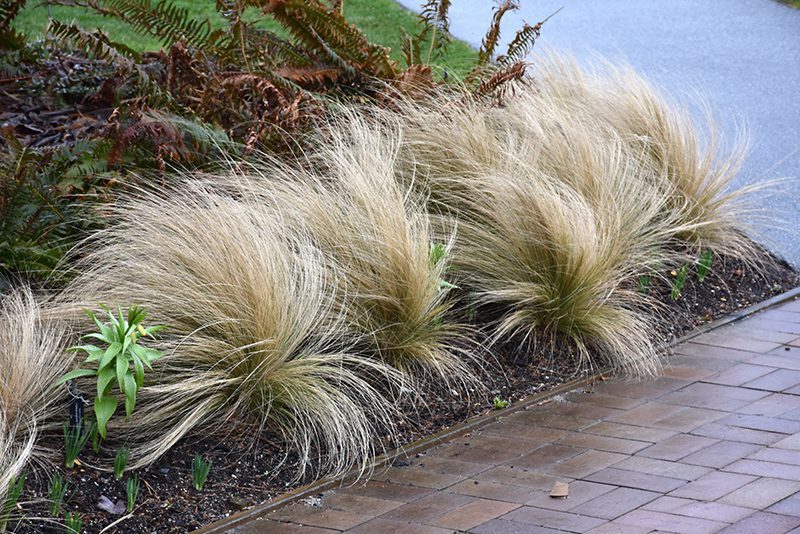
3. Muhly Grass: Okay, I’m going to just kind of lump a bunch of these muhly grasses together here, because there are multiple varieties, and they are all fabulous! Muhly grasses are ornamental grasses that thrive in sun to part sun locations and grow to average landscape sizes of around 4′ tall x 3′-4′ wide (depending on variety).
With muhly grasses, you can experience a myriad of colorful hues. Gulf Muhly, native to Texas, puts on one of the most striking displays in late summer in areas that it has been planted in mass. Pink flower plumes appear to glow like a soft firelight in the waining sunshine. Bamboo Muhly looks like it’s namesake indeed, sporting very thin reeds of bamboo-like foliage and offers up an airy, billowy, and fluffy texture when its white plumes burst in fall. Lindheimer’s Muhly, a Texas native, is a sought after specimen for it’s gorgeous bluish-green foliage that grows in a clumping, rounded form. The plumes begin with a slight purplish tint and go through a spectrum of changing color ending in off white to tan seed heads.
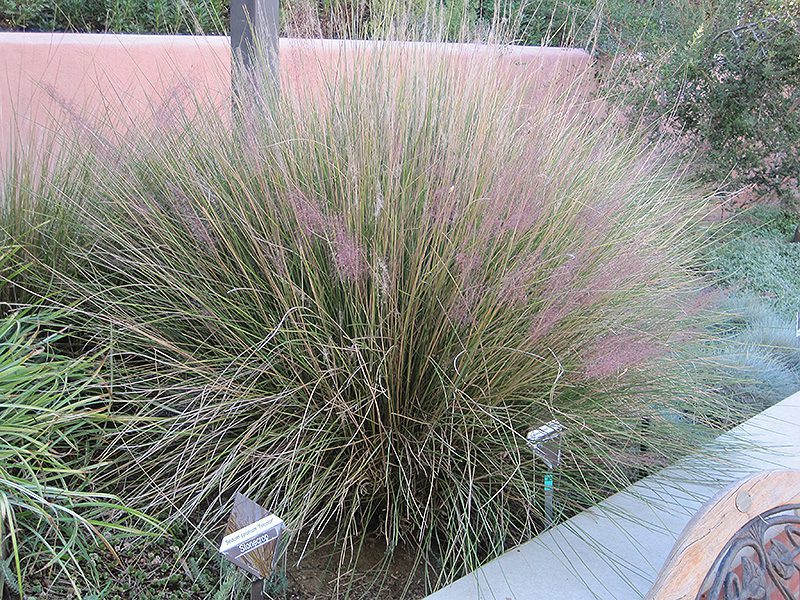
4. Pampas Grass: One of our larger specimens of ornamental grasses, Pampas Grass can reach a mature size of 6′ tall x wide. (There is a dwarf variety but even that can reach heights of 5′.) A deer resistant option, Pampas Grass will also tolerate poor soils, drought conditions, and doesn’t mind the heat one bit. Giant, showy, fluffy white plumes pop in spring, last for months, and create a stunning landscape display.
These ornamental grasses are a great choice for privacy or screening plants, for use as windbreakers, or as an eye-catching stand alone specimen. Full sun is best for Pampas grass though it can tolerate a little bit of shade. This one will grow quickly.
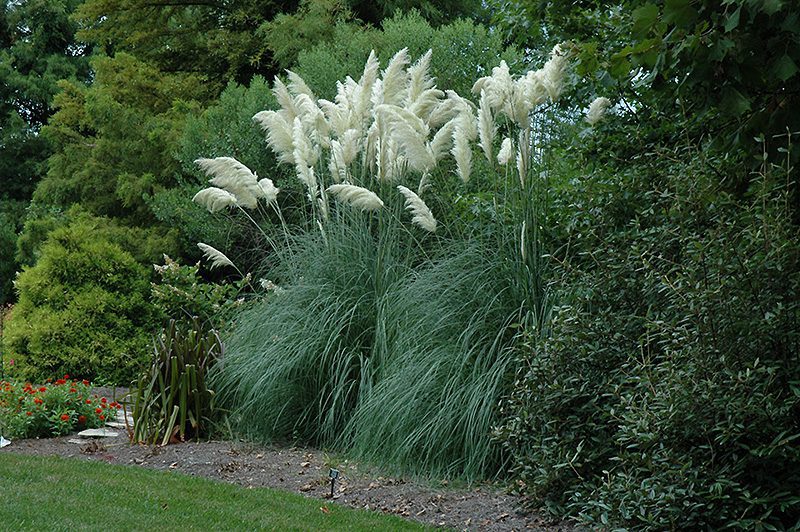
5. Zebra Grass and Maiden Grass (‘Cosmopolitan’): I had to put these two ornamental grasses in here mostly because I love the gorgeous patterns on their foliage. (It’s also nice that they are deer resistant and low water users too!) These are both Miscanthus sinensis grasses that average out around 6′ tall by 5′ wide. But let’s talk about that foliage.
Zebra Grass presents with dinstinct yellow-gold bands running horizontally up and down foliage. Bronze-coppery plumes rise above the foliage in late summer. ‘Cosmopolitan’ Maiden Grass produces those same coppery plume with green and white variegation running vertically up the broad leaved foliage. These grasses are not Texas natives, but they generally do not pose threats from insects or disease and are so beautiful, they are worth a look.
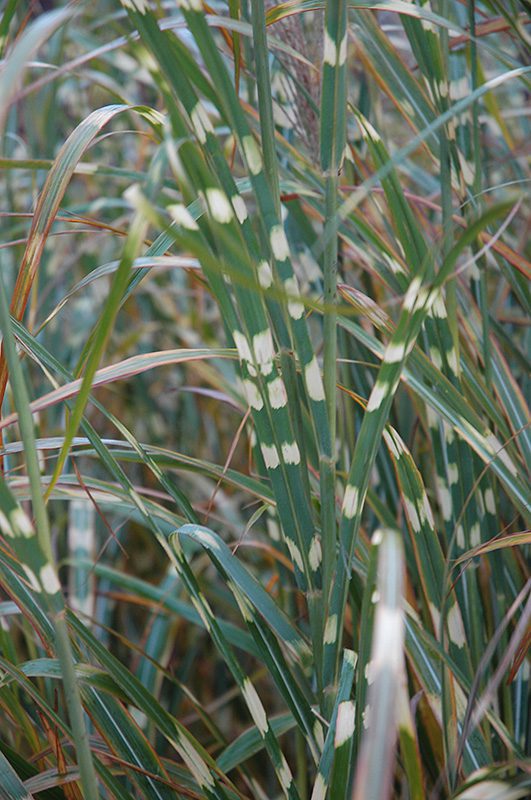

4 Extra Tips About Ornamental Grasses
- Remember that while some ornamental grasses go dormant during winter, it is still advisable to leave them be until early spring. Birds feed on their seedheads and the dried foliage provides shelter and habitiat for other local wildlife throughout the winter.
- Be mindful not to overwater your grasses, especially through winter as most can suffer from root rot when given too much moisture.
- Plan on dividing ornamental grasses every 3 years. If not, the middle of the grass can decline in health.
- You can always learn more about these ornamental grasses, and others, at our Plantfinder Tool on our website. It is a great research tool for planning your garden designs.
~The Happy Gardener, Lisa Mulroy

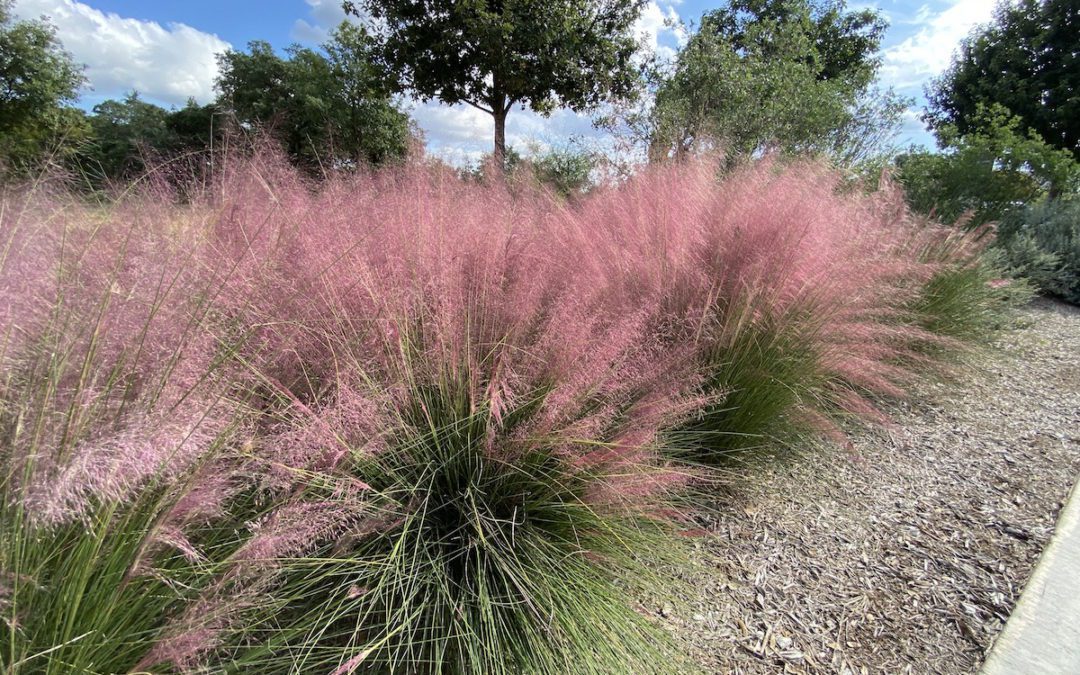
where can I find ruellia plants
Hi Jane,
Are you looking for the ruellia that is also referred to as Mexican Petunia? If so, that is something that both of our locations commonly carry. There are other ruellia species out there, so if you can hone in on what type you are specifically looking for, I can better assist.
Are Zebra Grass and Maiden Grass shade tolerant
Hi Morris,
No, those two grasses prefer sun, or at least mostly sun. For shade tolerant grasses you might want to look at Inland Sea Oats, Indiangrass, ‘Rubrum’ Fountain grass, and Texas Sacahuista (not really a grass, but very grass-like).